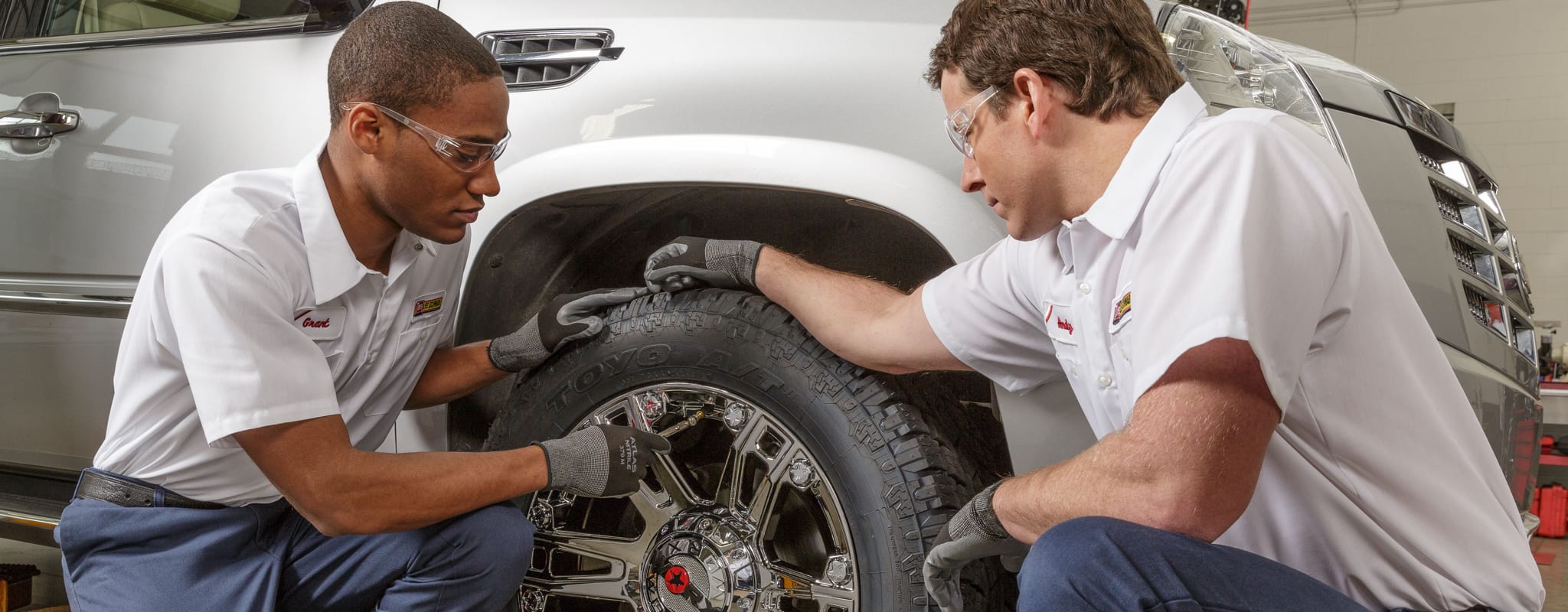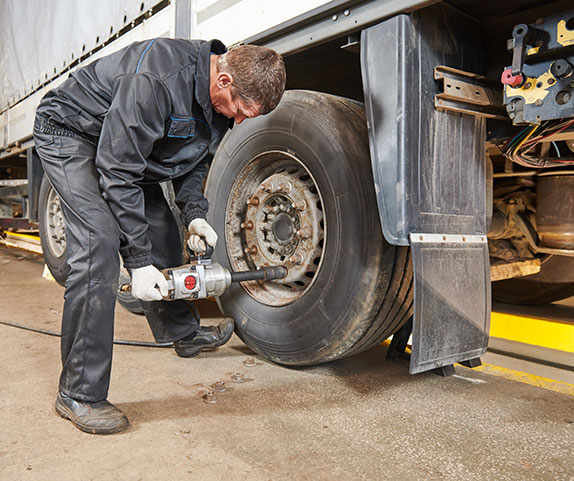Unlock Efficiency: Expert GMC Tire Service at Morris Tires
Unlock Efficiency: Expert GMC Tire Service at Morris Tires
Blog Article
Tire Solution: The Effect of Weather
When it comes to making sure ideal performance and security when traveling, understanding the impact of climate conditions on tire solution is essential. From scorching warm to icy roads, each climate aspect can dramatically affect tire functionality and total driving experience. By diving right into the impacts of differing weather on tires, chauffeurs can acquire important insights that might enhance their vehicle's efficiency and longevity. In this conversation, we will certainly discover the detailed connection in between weather condition conditions and tire solution, clarifying the relevance of weather-specific tire maintenance techniques and factors to consider.
Warm and Tire Performance
When exposed to high temperature levels, tires experience adjustments in efficiency that can significantly influence automobile safety and security and handling. The warmth created from extended driving or hot weather condition conditions creates the tire rubber to soften, leading to lowered step life and boosted wear.

Cold Weather Effects
Cold weather conditions can have a considerable effect on tire efficiency and security. As temperatures drop, tire rubber can harden, resulting in decreased grip on icy or snow-covered roadways. In cold weather, tires may additionally lose air stress a lot more rapidly, which can influence managing and gas efficiency. Furthermore, cold temperatures can create tire sidewalls to stiffen, raising the danger of damages from holes or various other road threats.
To minimize the effects of cold climate on tires, it is vital to routinely examine tire stress and inflate them to the maker's recommended degrees. Utilizing winter or all-season tires made for winter conditions can likewise enhance grip and grip on icy or snowy roads. Proper tire upkeep, consisting of routine assessments for wear and damages, comes to be a lot more vital throughout chillier months to make sure ideal efficiency and safety.
Rainy Conditions Impact
Tires with worn-out footsteps are more vulnerable to hydroplaning, where a layer of water builds up in between the road and the tire surface, leading to loss of traction. To combat this, vehicle drivers need to consistently evaluate their tires for appropriate step depth and think about investing in tires especially made for wet conditions.
Additionally, wet weather can additionally lower exposure, making it challenging for chauffeurs to see the road in advance clearly (GMC Tire Service). In such conditions, it is vital to adjust driving rates accordingly and keep a risk-free adhering to distance to enable for unexpected quits. Appropriately inflated tires can likewise aid in maintaining control on wet roadways by providing much better handling and grasp
Snow and Tire Safety
Snow-covered roadways present unique obstacles for chauffeurs, highlighting the significance of proper tire option and maintenance. When driving in snowy conditions, having the right tires can make a significant distinction in security and performance. Wintertime tires are made with special rubber compounds and step patterns to provide better traction on snow and ice compared to all-season tires. The much deeper footsteps and sipes of winter months tires help hold the click here to find out more road much better, reducing the risk of sliding and sliding.

It is essential to comply with maker directions when making use of and setting up tire chains to stop damage to the tires and automobile. By choosing the appropriate tires, keeping proper inflation, and thinking about added traction aids like tire chains, vehicle drivers can boost their safety and security when navigating snow-covered roads.
Weather-Related Tire Maintenance
When encountered with various climate condition, proper tire upkeep comes to be an essential facet of car safety and efficiency. Weather-related tire maintenance includes a variety of methods targeted at ensuring ideal tire function and longevity in various weather condition situations. One vital aspect of weather-related tire upkeep is tire pressure regulation. Varying temperatures can trigger tire stress to differ, influencing grip and fuel effectiveness. Consistently readjusting and inspecting tire stress according to producer recommendations is important for secure driving in altering climate condition. Furthermore, tire tread depth plays a considerable duty in dealing with different weather condition elements. Tires with appropriate walk deepness supply better grasp on damp or icy roadways, minimizing the danger of hydroplaning or skidding. When walk wear gets to see this site a certain depth is essential for preserving grip and security in damaging weather condition, inspecting tire tread frequently and changing tires. By focusing on weather-related tire maintenance, drivers can boost safety and security, boost car performance, and lengthen the life-span of their tires.
Verdict
In verdict, climate conditions have a substantial influence on tire performance and security. From warm impacting tire pressure and use to cool weather reducing traction, it is important to consider the weather condition when preserving a knockout post and using tires.
In this conversation, we will discover the intricate connection between climate conditions and tire solution, losing light on the value of weather-specific tire upkeep practices and considerations.

Report this page